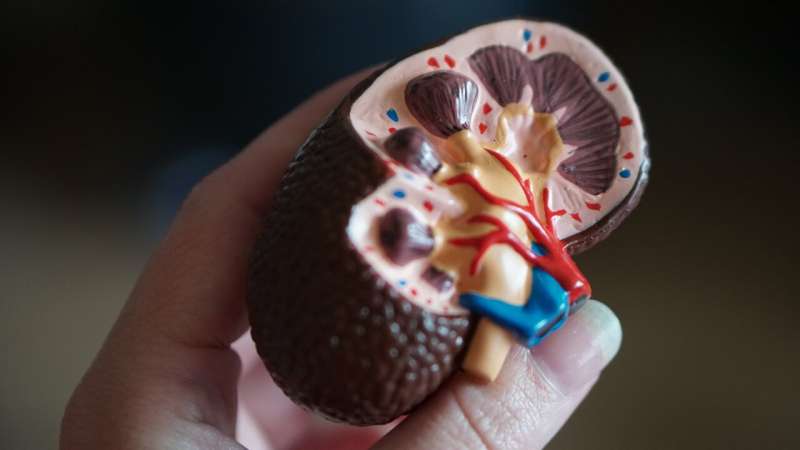This article has been reviewed according to Science X's editorial process and policies. Editors have highlighted the following attributes while ensuring the content's credibility:
fact-checked
trusted source
proofread
Comparing pregnancy rates in patients undergoing two types of dialysis

Among patients with end-stage kidney disease (ESKD) on home dialysis, pregnancy rates are higher with home hemodialysis than peritoneal dialysis, according to new research from the University of Cincinnati.
The study, published in the journal Kidney International Reports, finds an overall pregnancy rate of almost 9 people per 1,000 (PTPY) over a year's time. Compared to women on peritoneal dialysis, women on home hemodialysis are slightly more than twice as likely to become pregnant.
Hemodialysis involves use of a filtering machine to remove waste and extra fluid from a patient's blood and then returning the filtered blood into their body; peritoneal dialysis involves a patient's blood being filtered inside their own body through a catheter that is surgically placed in the belly instead of using a dialyzer machine.
"Childbearing is an integral part of a woman's life. However, ESKD disrupts this critical element due to impaired fertility making pregnancy uncommon in women on dialysis, and those who become pregnant face risk of adverse maternal and fetal outcomes," says Silvi Shah, MD, assistant professor in the Division of Nephrology at UC and the lead author of the study. "However, this information will help patients and health care providers in shared decision-making regarding management of their reproductive health.
"Since data is so scarce for pregnancy in women undergoing home dialysis, we examined the rates, racial and ethnic differences and factors associated with pregnancy in this high-risk population."
The study evaluated 26,837 women of childbearing age undergoing home dialysis between Jan. 1, 2005, and Dec. 31, 2018, using United States Renal Data System data. Overall, 437 pregnancies were identified.
The pregnancy rate was almost 9 people per 1,000 over a year's time, with a higher rate of home hemodialysis than peritoneal dialysis (16 vs. 7.5 PTPY). Black women had a nearly one and a half times higher likelihood to get pregnant as compared to white women. Younger age was also associated with a higher likelihood of pregnancy.
Shah says the study is unique in that it addresses a comprehensive racial group of home dialysis patients to better understand the incidence of pregnancy, and factors associated among home dialysis patients. The study further considered patients with complete Medicare coverage, thus avoiding the potential shortfalls of registries dependent on voluntary reporting or patient recall.
This research shows for the first time the rates of pregnancy with kidney failure on home dialysis and that pregnancy rates in women on home hemodialysis are higher than peritoneal dialysis.
"This tells us that additional factors contribute to these differences by type of home dialysis modality. While we can speculate that dialysis prescriptions and hypertonic dextrose solutions have an important role, the real reasons remain unknown," says Shah. "We wanted to study this due to little information available on pregnancy in the home dialysis population. The information will help us to counsel our patients and be involved in shared decision making with regards to choice of home dialysis method."
A previously published study led by Shah showed that among patients with ESKD, there is a racial disparity as to who is more likely to become pregnant. Native American, Hispanic and black women have a higher likelihood of pregnancy than white women.
More information: Silvi Shah et al, Pregnancies in Women With Kidney Failure on Home Dialysis in the United States, Kidney International Reports (2024). DOI: 10.1016/j.ekir.2024.01.045


















